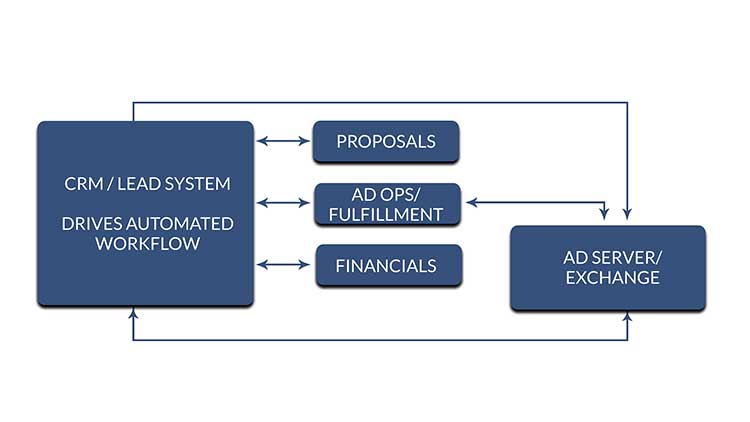Ensuring Digital Ad Monetization Starts With Interoperability

As many people know, the very first banner ad for AT&T appeared in 1994 on Wired Magazine’s first foray into the world wide web - their website. From that day forward, companies began trying to figure out how to monetize their connection, their content, and their properties. Fast-forward more than 20 years and people are still trying to comprehend how they can extract the full value of what they own and produce.
Where the digital ad is concerned, data has become a primary driver for both measuring and reaching customers. However, how that data is accessed, used, and shared between media ad sellers and buyers is continually changing and evolving. It becomes a game of who moved my cheese?
Expanded ad revenue channels and the surmounting data tethered to them has required media ad sellers to apply a more consultative sales approach to their strategy. The ad buyer/marketer, big and small, is inundated with options, looking for thorough and comprehensive advertising opportunities that make the most sense for them – and it is up to the media ad seller to know the intricacies of every ad opportunity and how it would best fit each diverse marketer. Of course, the challenge does not stop with simply needing to know your products and be more consultative. The media ad seller needs to be lean. The first banner ad had zero expectations since nothing like it had come before it. Today that ad is being placed in a specified section of a website (or better yet within a targeted piece of content, email, or mobile application) and is capturing conversions over impressions. Its creative design and call-to-action are sequential and changing weekly or daily – making the need to maximize revenue on each ad sold and placed all the more vital.
ALSO: ANA Asks Digital Players for Advertising Safeguards
For media ad sellers, leveraging technology has become a mission critical to their sales strategy. And when it comes to that technology, incorporating into an advertising workflow that is founded on interoperability is key, because media ad sellers need full transparency and access to data throughout the entire workflow.
Here’s how it works:
At the front of the digital advertising workflow, you have pre-sales activities typically managed by a CRM system. Even though these activities cannot truly be classified as a ‘sale’ yet, their presence in the workflow plays a progressive role in kick-starting the entire sales loop. Such systems today can aggregate and normalize data from multiple systems/sources, providing users with centralized contact and account records. Ensuring the CRM or lead system can integrate with all systems in the workflow, will provide the interoperability necessary to streamline all sales processes end-to-end. For example, the lead system will provide real-time connectivity to the ad server, giving media ad sellers up-to-the-second information they rely on. It allows them to view the entire available inventory as well as autofill available impressions. Once an order has been placed and has moved through fulfillment and into post-sale, the lead system, still tethered to the order, provides reporting and analytics from the ad server. This rounds out the media ad seller’s ability to consult the marketer’s advertising options, decisions, and orders by automating the delivery of the ad impressions and analytics.
ALSO: What We’ve Learned About Virtual Reality Advertising
In addition to driving the workflow, the lead system, while serving as a window into the entire workflow, uses customizable dashboards to provide insights, such as activity alerts, or sales totals by medium, category, account, or more. The lead system in a digital advertising workflow is just like that of an engine of a car, whereby you don’t necessarily see what’s under the hood, but you rely on it as the primary function to get you from point A to point B. It interconnects with all moving pieces and parts under the hood and relays information to a dashboard of anything that needs your attention along the way, such as mileage per gallon, navigation, traffic alerts, and so much more – including the tried and true ‘need more windshield fluid’ alert. The ad alerts run the gamut of account not spending, overdue, % of forecast reached, etc.
For the marketer's advertising to be effective, they need a media ad seller that can serve them as a partner by providing them with the intelligence, insights, and (most importantly) the guidance that quantifies their advertising spend. And one sure-fire way to achieve that is to rely on the benefits delivered with a well-oiled digital advertising workflow.
Mark Gorman leads Matrix Solutions, a company whose platform managed $13.2 billion ad dollars for its customers in 2016. He gets the significance of having an advertising workflow that not only accommodates digital ads, but that monetizes them.
Broadcasting & Cable Newsletter
The smarter way to stay on top of broadcasting and cable industry. Sign up below



